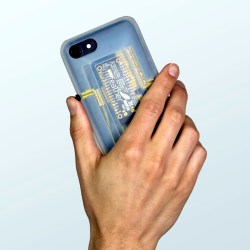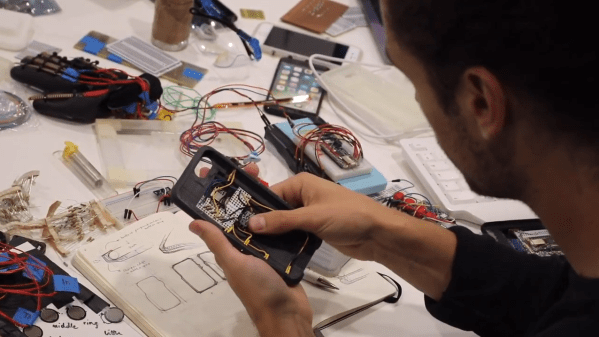 Smartphones and other modern computing devices are wonderful things, but for those with disabilities interacting with them isn’t always easy. In trying to improve accessibility, [Dougie Mann] created TypeCase, a combination gestural input device and chording keyboard that exists in a kind of symbiotic relationship with a user’s smartphone.
Smartphones and other modern computing devices are wonderful things, but for those with disabilities interacting with them isn’t always easy. In trying to improve accessibility, [Dougie Mann] created TypeCase, a combination gestural input device and chording keyboard that exists in a kind of symbiotic relationship with a user’s smartphone.
With TypeCase, a user can control a computer (or the smartphone itself) with gestures, emulate a mouse, or use the device as a one-handed chording keyboard for text input. The latter provides an alternative to voice input, which can be awkward in public areas.
The buttons and motion sensors allow for one-handed button and gestural input while holding the phone, and the Bluetooth connectivity means that the device acts and works just like a wireless mouse or keyboard. The electronics consist mainly of an Adafruit Feather 32u4 Bluefruit LE, and [Dougie] used 3D Hub’s on-demand printing service to create the enclosures once the design work was complete. Since TypeCase doubles as a protective smartphone case, users have no need to carry or manage a separate device.
TypeCase’s use cases are probably best expressed by [Dougie]’s demo video, embedded below. Chording keyboards have a higher learning curve, but they can be very compact. One-handed text input does remind us somewhat of a very different approach that had the user make gestures in patterns reminiscent of Palm’s old Graffiti system; perhaps easier to learn but not nearly as discreet.
Continue reading “Smartphone Case Doubles As Chording Keyboard, With Gesture Inputs”












